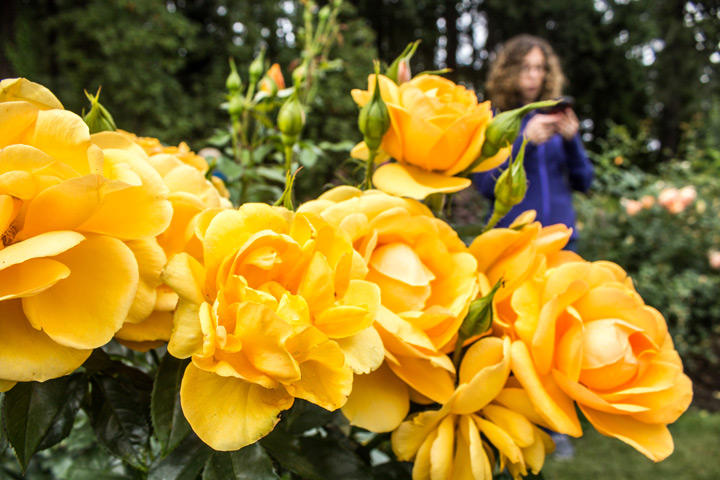Chris & Allyson vs. Oregon (2018)
Day One: Old Town Portland. Washington Park: International Rose Test Garden, Japanese Garden and Oregon Zoo.
A lot of our vacations start with walking tours, and why not? You get exercise and the lay of the land. Plus, if you go for "evil" walking tours -- the best kind -- you develop a deeper understanding of prostitution through the ages. And learning makes vacations fun.
Every city can support an evil walking tour, because cities aren't built by the finest specimens of humanity. Sure, the occasional hard-working religious refugee has to carve a new home out of the wilderness. But generally speaking, the disgusting, unpleasant work of building a city is done by disgusting, unpleasant people. If the city in question was built on a frontier, the people in question are extra unpleasant, because frontiers are for people who are running away from stuff.
Portland was a frontier city, and the Underground Portland walking tour promises to get you right into the nasty. It meets in Old Town, the core of the original city. Along the Willamette River, it now doubles as Portland's Chinatown. The tour office was once a frontier hotel -- essentially a hostel / tavern / place to have sex with prostitutes. The men of early Portland worked on the water, or in the timber industry. And after a hard day of chopping trees or longshoring or whatever, they wanted to relax with a drink and a hooker.
Most stories on the tour are fun, although not radically different from those on other vice tours. They feature shady tavern owners, murderous gangsters and free-spirited madams. The madam in this case ran her business on a boat, evading the authorities by shuttling between the distinct jurisdictions of Portland and East Portland. Supposedly the cities unified solely to stop her; this seems highly dubious, but calling out the guide would make things weird. There was also a nice note about one drinking establishment where the owner installed trough urinals under the bar, to keep patrons in prime money-spending position. Smart.
The guide (Brick, if memory serves) made sure to point out all the ethnic strife that tore up Old Town over the decades. Chinese and Japanese communities were side by side, with all the great tension that goes with that classic rivalry. The Japanese were later uprooted for internment camps, and we stopped at a memorial to that atrocity. We learned that Portland's overwhelming modern whiteness goes back to laws that made it illegal for black people to have jobs in the state. And we were told that Oregonians historically have a healthy dislike of outsiders. (One former slogan: Come visit, don’t stay.)

Carrying on a great tradition our first day in Portland.

On the waterfront (and a view of where the Blazers play).
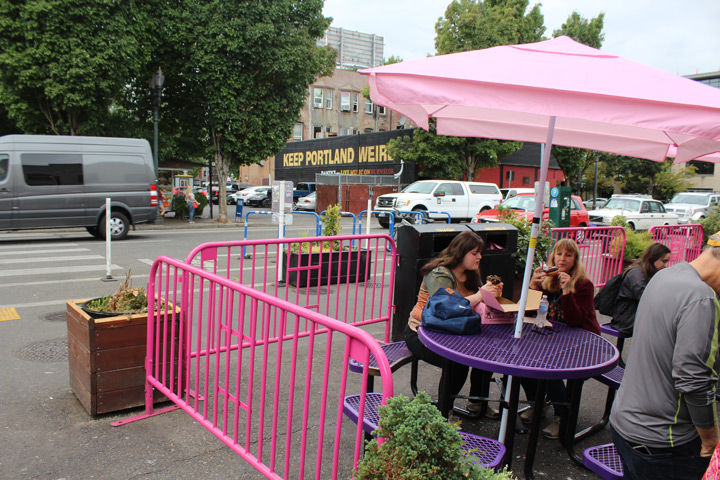
The sidewalk seating at world-famous Voodoo Doughnut.
Our guide also freely admitted that the biggest draw for the walking tour was a sham. The hot urban legend is "Shanghai tunnels," a supposed network of passages under the city that were used for kidnapping and evading the authorities. They never existed. There were flood control tunnels, which the city filled in for safety reasons; but they probably weren't used for that much criminal activity. The legend of the tunnels, however, overlapped with the real practice of crimping: duping men into signing contracts that effectively turned them into indentured servants. A not uncommon ploy was floating a loan to people who were new in town, then taking them out to get plastered and spend that money. When they were broke, you would immediately call in the debt, and under the terms of the loan the men were forced to pay off their debt with hard labor -- usually on a ship. You'd get a paltry paycheck when they let you go after a few years, sometimes with the cost of the precipitating booze deducted. Fun!
The walking tour gave us our first chance to absorb the Portland vibe. As advertised, it was methy! Lots of addicts and mentally unstable people were walking the streets, and the smell of urine was never more than a block away. We saw someone clean his ears with a toothbrush, then brush his teeth. So at least he's committed to cleanliness, right? When you're getting ready to go to Portland, most people will comment on the street person situation. You'll think they're exaggerating until you get there. Extreme progressivism has its drawbacks.
We walked past Voodoo Donuts, but we didn't have any donuts, because dear god who stands in line for a donut? But we did get a photo, so that when people say "did you go to Voodoo Donuts?" we can say "sort of." When the tour was over, the far more natural eating option was lunch at a haunted pizzeria -- supposedly built atop one of the Shanghai tunnels. Which we now knew to be a myth. But hey, good pizza!
Washington Park
If you visit Las Vegas, you make a point of sinning. Therefore, if you're in Portland, you have to stop and smell the roses. Right?
Rose City has several gardens, and each of them has an Internet review that will tell you why that particular garden is overrated. So you might as well see THE rose garden. Right?
The International Rose Test Garden is probably the lynchpin for Washington Park, Portland's very large (and not very urban) greenspace. It was founded in 1917, and it is one of several international rose test gardens. It is not clear what exactly is being tested. I like to think there's an international consortium of flower scientists trying to determine the exact number of roses required to apologize when you're caught banging your secretary. So let's go with that.

Stopping to smell the roses at the International Rose Test Garden.

The yellow roses of ... uh, not Texas.
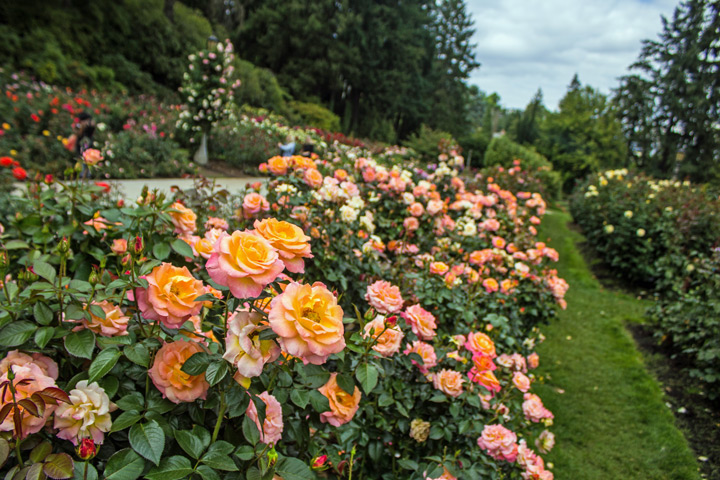
There ain't many bad views at the rose garden.
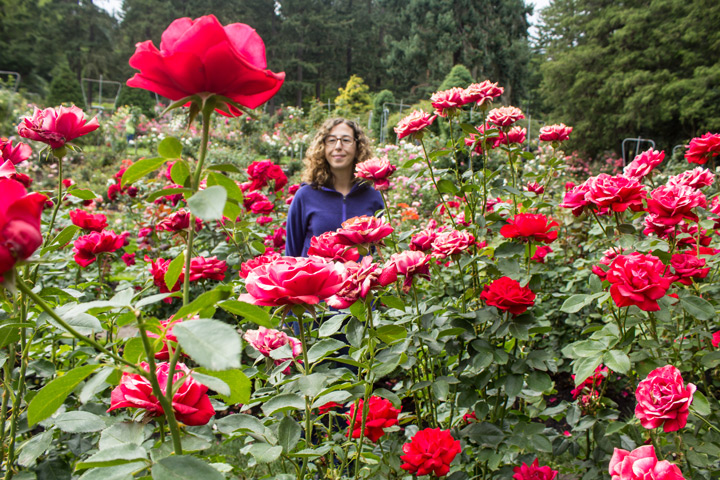
Blending in seamlessly.
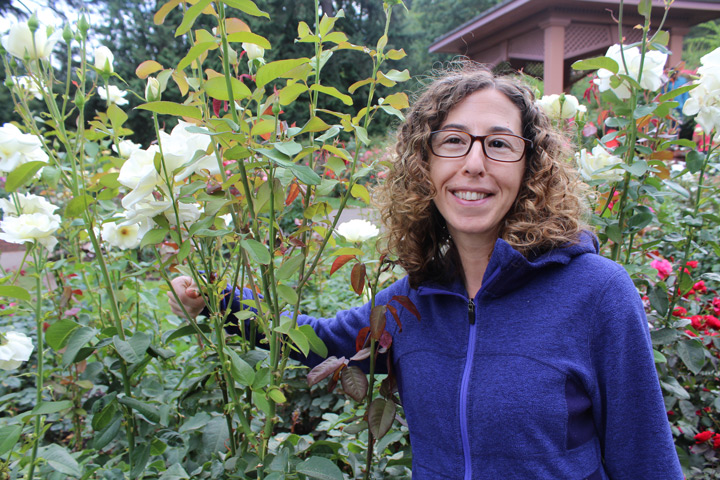
Allyson gets a candid shot with the winning rose from her birth year.

A quick stroll through Portland's Japanese Garden.
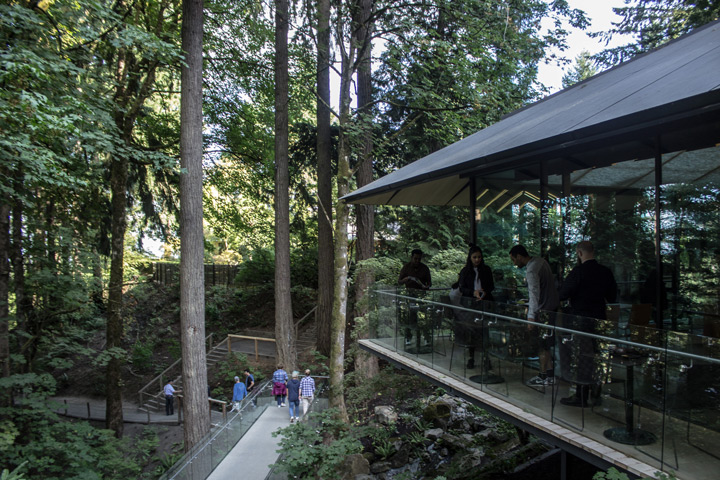
Tea time is all the time at the Japanese Garden.

Welcome to the Oregon Zoo!

Yes, we found the bears almost immediately.
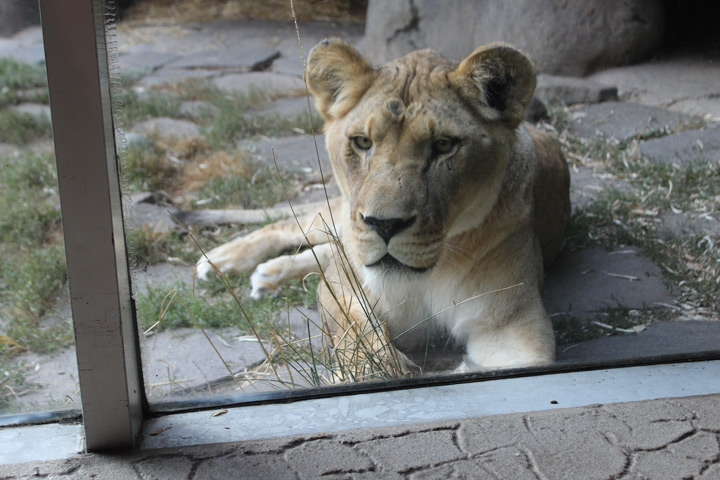
Not native to Oregon, but still pretty damn cool.

Your typical vegan beach bar, because Portland.
There are thousands of rose bushes crammed into a compact area. And that's most of what writing can tell you. Of particular note is the "gold medal" garden; apparently there's some kind of competition, with a different winner named each year since the early 20th century. We made sure to find the winner from Allyson's birth year, 1978. After an exhaustive search, we found it hilarious that the "Honor" rose had about one and a half flowers on the bush. The winner for 1976 -- my birth year -- was "Charisma." It was a great year for charisma on several fronts.
Washington Park has lots to offer, and if airlines had less restrictive carry-on policies on ranged weapons, we might have brought our bows and checked out the archery range. Instead, we headed uphill from the rose garden to the Japanese garden. It was opened in the 1960s, supposedly as a way to make nice for all those internment camps. Our guide was passionate, but in an extremely elderly way; born in the 1930s, she was barely audible as she explained the philosophy behind Japanese garden design. However, you do not need the theory to enjoy the gardens. We ran ahead and absorbed what we could before enjoying tea and a few treats at the garden's tea house.
The last Washington Park stop was the Oregon Zoo. By the time we left the Japanese Garden, we figured that we'd have only an hour to see animals before the zoo closed. But we were in vacation mode, where the rules on spending are insanely warped. And the Oregon Zoo almost definitely would have a bear.
It was a great investment. There was a concert at the zoo -- some country group was performing in an amphitheater as part of their seasonal concert series. We forded the stream of concertgoers and had most of the exhibits to ourselves. The Oregon Zoo is very well designed. The habitats are cut into the very "natural" setting of the western Portland hills. The exhibits near the entrance showcase the animals of the Pacific Northwest, and when you get a little further in they go for the show-stopper African beasts. The upshot: We saw black bears. The habitat has three of them -- the only kind of bear still living in the Oregon wilds -- and they were all hanging out for a very long time. After that it was a power walk to the African habitats, where lions were chilling and wild dogs were ... well, humping.
The evening was concluded with a trip to the "North Mississippi" neighborhood and the No Bones beach bar. It's a vegan beach bar, because that's how Portland works. Without a doubt, it was the finest vegan beach bar we've ever been to.
